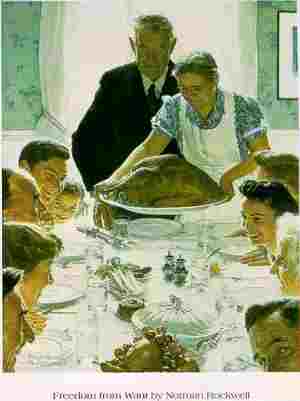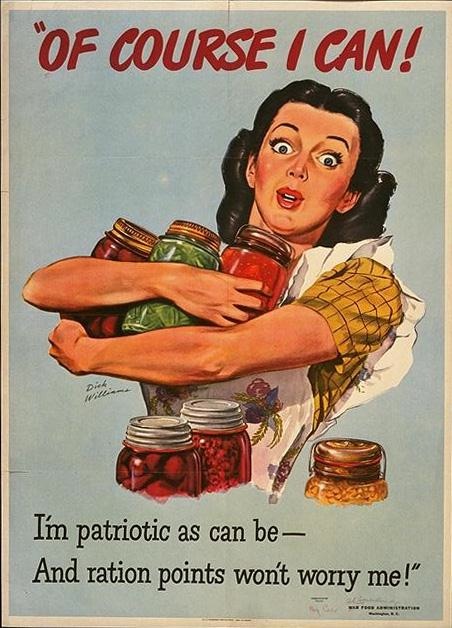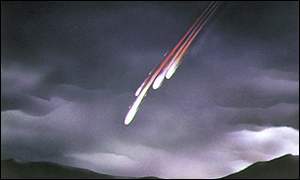 |
 |
 |
Reply
 | |
 March 27, 1912 Japanese cherry trees planted along the Potomac In Washington, D.C., Helen Taft, wife of President William Taft, and the Viscountess Chinda, wife of the Japanese ambassador, plant two Yoshina cherry trees on the northern bank of the Potomac River, near the Jefferson Memorial. The event was held in celebration of a gift, by the Japanese government, of 3,020 cherry trees to the U.S. government. The planting of Japanese cherry trees along the Potomac was first proposed by socialite Eliza Scidmore, who raised money for the endeavor. Helen Taft had lived in Japan while her husband was president of the Philippine Commission, and knowing the beauty of cherry blossoms she embraced Scidmore's idea. After learning of the first lady's interest, the Japanese consul in New York suggested making a gift of the trees to the U.S. government from the city of Tokyo. In January 1910, 2,000 Japanese cherry trees arrived in Washington from Japan but had fallen prey to disease during the journey. In response, a private Japanese citizen donated the funds to transport a new batch of trees, and 3,020 specimens were taken from the famous collection on the bank of the Arakawa River in Adachi Ward, a suburb of Tokyo. In March 1912, the trees arrived in Washington, and on March 27 the first two trees were planted along the Potomac River's Tidal Basin in a formal ceremony. The rest of the trees were then planted along the basin, in East Potomac Park, and on the White House grounds. The blossoming trees proved immediately popular with visitors to Washington's Mall area, and in 1934 city commissioners sponsored a three-day celebration of the late March blossoming of the trees, which grew into the annual Cherry Blossom Festival. After World War II, cuttings from Washington's cherry trees were sent back to Japan to restore the Tokyo collection that was decimated by American bombing attacks during the war. |
|
Reply
 | |
| March 28, 1776 De Anza founds San Francisco Juan Bautista de Anza, one of the great western pathfinders of the 18th century, arrives at the future site of San Francisco with 247 colonists. Though little known among Americans because of his Spanish origins, Anza's accomplishments as a western trailblazer merit comparison with those of Lewis and Clark, John Fremont, and Kit Carson. Born and raised in Mexico, Anza joined the army when he was 17 and became a captain seven years later. He excelled as a military leader, displaying tactical genius in numerous battles with the Apache Indians. In 1772, Anza made his first major exploratory mission, leading an arduous but successful expedition northwest to the Pacific Coast. Anza's expedition established the first successful overland connections between the Mexican State of Sonora and northern California. Impressed by this accomplishment, the Mexican viceroy commissioned Anza to return to California and establish a permanent settlement along the Pacific Coast at San Francisco Bay. Although seagoing Spanish explorers had sailed along the northern California coast during the 16th and 17th centuries, the amazing natural harbor of San Francisco Bay was only discovered in 1769. The Spanish immediately recognized the strategic importance of the bay, though it would be seven years before they finally dispatched Anza to establish a claim there. Anza and 247 colonists arrived at the future site of San Francisco on this day in 1776. Anza established a presidio, or military fort, on the tip of the San Francisco peninsula. Six months later, a Spanish Franciscan priest founded a mission near the presidio that he named in honor of St. Francis of Assisi-in Spanish, San Francisco de Asiacutes. The most northerly outpost of the Spanish Empire in America, San Francisco remained an isolated and quiet settlement for more than half a century after Anza founded the first settlement. It was not until the 1830s that an expansionist United States began to realize the commercial potential of the magnificent natural harbor. In the wake of the Mexican War, the U.S. took possession of California in 1848, though San Francisco was still only a small town of 900 at that time. With the discovery of gold that year at Sutter's Fort, however, San Francisco boomed. By 1852, San Francisco was home to more than 36,000 people. The founder of San Francisco did not live to see it flourish. After establishing the San Francisco presidio, Anza returned to Mexico. In 1777, he was appointed governor of New Mexico, where he eventually negotiated a critical peace treaty with Commanche Indians, who agreed to join the Spanish in making war on the Apache. In declining health, Anza retired as governor in 1786 and returned to Sonora. He died two years later, still only in his early 50s and remembered as one of greatest trailblazers and soldiers in Spain's northern borderlands. |
|
Reply
 | |
March 29, 1939 Clark Gable & Carole Lombard marry Clark Gable and Carole Lombard marry on this day in 1939 as Gable is filming Gone with the Wind. The marriage was considered one of Hollywood's happiest but ended in tragedy when Lombard was killed in a plane crash in 1942, en route from a War Bond drive. Gable joined the air force shortly after her death, rose to the rank of major, and won several medals. Gable was born in Ohio in 1901, the son of a farmer who later became an oil driller. Gable went to work at a tire factory in Akron, Ohio, at age 14. He began attending theater and started working as a backstage runner in the evenings but moved to Oklahoma with his father in his late teens to drill for oil. At age 21, he joined a traveling theater troupe, then worked as a lumberjack and salesman in Oregon before joining another troupe. He married the head of the troupe, who was 14 years his senior, in 1924, and the couple moved to Hollywood. Gable occasionally worked as a film extra but had no luck landing bigger roles, so he returned to live theater. He was cast in several successful Broadway productions, played a lead role in the Los Angeles production of a hit play in 1930, and landed a screen test-which he failed. He and his wife divorced the same year. Finally, in 1931, he was cast as a villain in a western called The Painted Desert, and MGM signed him immediately. He stole the show in A Free Soul, with Norma Shearer and Lesley Howard, and married his second wife, a rich Texas socialite some 17 years his senior, the same year. In 1934, against his wishes, MGM lent him to Columbia to star in It Happened One Night with Claudette Colbert. Both won Oscars for the film. Carole Lombard, born Jane Alice Peters in 1908, grew up in Los Angeles and made her first film appearance at age 12. She signed with Fox in 1925, but it was only after the studio terminated her contract and she signed with Mack Sennett in 1927 that her gift for comedy was discovered. She starred in several brilliant screwball comedie, including Twentieth Century (1934) and My Man Godfrey (1936). She married actor William Powell in 1931, but divorced him two years later. Lombard and Gable began seeing each other in 1935, shortly after Gable separated from his second wife. His career flourished during this period, and he won his greatest role, as Rhett Butler, in Gone with the Wind in 1939. Three years later, Lombard starred in Ernst Lubitsch's brilliant comedy, To Be or Not To Be (1942). It was her last film. After Lombard's tragic death and Gable's subsequent air force stint, he returned to Hollywood in Adventure (1945), but his career had cooled. He allegedly began drinking heavily, and MGM dropped his contract. His last film, The Misfits (1961), seemed to promise a comeback, but he died of a heart attack before its release-and before the birth of his only child, John Gable, who was born to Gable's fifth wife, Kay Spreckles, in 1960, shortly after Gable's death. |
|
Reply
 | |
| April 1, 1700 April Fools tradition popularized On this day in 1700, English pranksters begin popularizing the annual tradition of April Fools' Day by playing practical jokes on each other. Although the day, also called All Fools' Day, has been celebrated for several centuries by different cultures, its exact origins remain a mystery. Some historians speculate that April Fools' Day dates back to 1582, when France switched from the Julian calendar to the Gregorian calendar, as called for by the Council of Trent in 1563. People who were slow to get the news or failed to recognize that the start of the new year had moved to January 1 and continued to celebrate it during the last week of March through April 1 became the butt of jokes and hoaxes. These included having paper fish placed on their backs and being referred to as "poisson d'avril" (April fish), said to symbolize a young, easily caught fish and a gullible person. Historians have also linked April Fools' Day to ancient festivals such as Hilaria, which was celebrated in Rome at the end of March and involved people dressing up in disguises. There's also speculation that April Fools' Day was tied to the vernal equinox, or first day of spring in the Northern Hemisphere, when Mother Nature fooled people with changing, unpredictable weather. April Fools' Day spread throughout Britain during the 18th century. In Scotland, the tradition became a two-day event, starting with "hunting the gowk," in which people were sent on phony errands (gowk is a word for cuckoo bird, a symbol for fool) and followed by Tailie Day, which involved pranks played on people's derrieres, such as pinning fake tails or "kick me" signs on them. In modern times, people have gone to great lengths to create elaborate April Fools' Day hoaxes. Newspapers, radio and TV stations and Web sites have participated in the April 1 tradition of reporting outrageous fictional claims that have fooled their audiences. In 1957, the BBC reported that Swiss farmers were experiencing a record spaghetti crop and showed footage of people harvesting noodles from trees; numerous viewers were fooled. In 1985, Sports Illustrated tricked many of its readers when it ran a made-up article about a rookie pitcher named Sidd Finch who could throw a fastball over 168 miles per hour. In 1996, Taco Bell, the fast-food restaurant chain, duped people when it announced it had agreed to purchase Philadelphia's Liberty Bell and intended to rename it the Taco Liberty Bell. In 1998, after Burger King advertised a "Left-Handed Whopper," scores of clueless customers requested the fake sandwich. | |
|
Reply
 | |
| I thought I was pretty conversant in Tudor history, but this little gem came as a complete surprise. November 23, 1499 Flemish pretender executed in London Perkin Warbeck, who invaded England in 1497 claiming to be the lost son of King Edward IV, is hanged for allegedly trying to escape from the Tower of London. Believed to be a native of Tournai in Belgium, Warbeck went to Ireland in 1491 and claimed he was Richard, duke of York, the second son of Edward IV. Richard and his elder brother were presumed murdered in the Tower of London by their uncle, King Richard III, in 1483. Warbeck found support from the enemies of King Henry VII, the first Tudor king of England, and in 1497 landed at Cornwall and raised an army of 6,000 men. Faced with King Henry's larger army, he fled but was captured and imprisoned. In November 1499, he was executed. Warbeck's story was written by the Tudors--history's victors--and it might never be known whether he was actually Richard of York or just a Flemish impostor. | |
|
Reply
 | |
November 24, 1978 Letterman's first Tonight Show appearance David Letterman makes his first guest appearance on The Tonight Show. Letterman became a favorite on the show, serving as guest host more than 50 times. By 1982, Letterman had his own late-night comedy talk show, Late Night with David Letterman, which ran until 1993. When NBC chose Jay Leno instead of Letterman to become the replacement when host Johnny Carson retired, Letterman changed networks and launched Late Show on rival network CBS. OMG!!!! I remember this! 30 years, holy cow! | |
|
Reply
 | |
November 25, 1941 A "war warning" is sent to commanders in the Pacific On this day in 1941, Adm. Harold R. Stark, U.S. chief of naval operations, tells Adm. Husband E. Kimmel, commander of the U.S. Pacific Fleet at Pearl Harbor, that both President Roosevelt and Secretary of State Cordell Hull think a Japanese surprise attack is a distinct possibility. "We are likely to be attacked next Monday, for the Japs are notorious for attacking without warning," Roosevelt had informed his Cabinet. "We must all prepare for trouble, possibly soon," he telegraphed British Prime Minister Winston Churchill. Kimmel's command was specifically at the mid-Pacific base at Oahu, which comprised, in part, Pearl Harbor. At the time he received the "warning" from Stark, he was negotiating with Army Lt. Gen. Walter C. Short, commander of all U.S. forces at Pearl Harbor, about sending U.S. warships out from Pearl Harbor in order to reinforce Wake and Midway Islands, which, along with the Philippines, were possible Japanese targets. But the Army had no antiaircraft artillery to spare. War worries had struck because of an intercepted Japanese diplomatic message, which gave November 25 as a deadline of sorts. If Japanese diplomacy had failed to convince the Americans to revoke the economic sanctions against Japan, "things will automatically begin to happen," the message related. Those "things" were becoming obvious, in the form of Japanese troop movements off Formosa (Taiwan) apparently toward Malaya. In fact, they were headed for Pearl Harbor, as was the Japanese First Air Fleet. Despite the fact that so many in positions of command anticipated a Japanese attack, especially given the failure of diplomacy (Japan refused U.S. demands to withdraw from both the Axis pact and occupied territories in China and Indochina), no one expected Hawaii as the target | |
|
Reply
 | |
 November 26, 1941 FDR establishes modern Thanksgiving holiday President Franklin D. Roosevelt signs a bill officially establishing the fourth Thursday in November as Thanksgiving Day. The tradition of celebrating the holiday on Thursday dates back to the early history of the Plymouth and Massachusetts Bay colonies, when post-harvest holidays were celebrated on the weekday regularly set aside as "Lecture Day," a midweek church meeting where topical sermons were presented. A famous Thanksgiving observance occurred in the autumn of 1621, when Plymouth governor William Bradford invited local Indians to join the Pilgrims in a three-day festival held in gratitude for the bounty of the season. Thanksgiving became an annual custom throughout New England in the 17th century, and in 1777 the Continental Congress declared the first national American Thanksgiving following the Patriot victory at Saratoga. In 1789, President George Washington became the first president to proclaim a Thanksgiving holiday, when, at the request of Congress, he proclaimed November 26, a Tuesday, as a day of national thanksgiving for the U.S. Constitution. However, it was not until 1863, when President Abraham Lincoln declared Thanksgiving to fall on the last Thursday of November, that the modern holiday was celebrated nationally. With a few deviations, Lincoln's precedent was followed annually by every subsequent president--until 1939. In 1939, Franklin D. Roosevelt departed from tradition by declaring November 23, the next to last Thursday that year, as Thanksgiving Day. Considerable controversy surrounded this deviation, and some Americans refused to honor Roosevelt's declaration. For the next two years, Roosevelt repeated the unpopular proclamation, but on November 26, 1941, he admitted his mistake and signed a bill into law officially making the fourth Thursday in November the national holiday of Thanksgiving Day. | |
|
Reply
 | |
| I've always been a little confused about the Irish "troubles." This helped a little. November 28, 1905 Sinn Féin founded in Ireland Sinn Féin, a political party dedicated to independence for all of Ireland, is founded in Dublin by Irish nationalist Arthur Griffith. Sinn Féin is Gaelic for "we ourselves" but also for "ourselves alone." From its inception, the party became the unofficial political wing of militant Irish groups in their struggle to throw off British rule. In 1911, the British Liberal government approved negotiations for Irish Home Rule, but the Conservative Party opposition in Parliament, combined with Ireland's anti-Home Rule factions, defeated the plans. With the outbreak of World War I, the British government delayed further discussion of Irish self-determination, and Irish nationalists responded by staging Dublin's Easter Uprising of 1916. In 1918, with the threat of conscription being imposed on the island, the Irish people gave Sinn Féin a majority in national elections, and the party established an independent Irish Parliament--Dáil Éireann--which declared Ireland a sovereign republic. In 1919, the Irish Volunteers, a prototype of the Irish Republican Army (IRA), launched a widespread and effective guerrilla campaign against British forces. In 1921, a cease-fire was declared, and in 1922 Arthur Griffith and a faction of former Sinn Féin leaders signed a historic treaty with Britain, calling for the partition of Ireland, with the south becoming autonomous and the six northern counties of the island remaining in the United Kingdom. Civil war followed the partition, ending with the defeat of the Irish Republican forces in 1923 by the Irish Free State (later the Republic of Ireland). Several years later, the IRA was reorganized underground. During the next eight decades, Sinn Féin remained the unofficial political wing of the IRA in its struggle for a unified and independent Ireland. | |
|
Reply
 | |
 November 29, 1942 Coffee rationing begins On this day in 1942, coffee joins the list of items rationed in the United States. Despite record coffee production in Latin American countries, the growing demand for the bean from both military and civilian sources, and the demands placed on shipping, which was needed for other purposes, required the limiting of its availability. Scarcity or shortages were rarely the reason for rationing during the war. Rationing was generally employed for two reasons: (1) to guarantee a fair distribution of resources and foodstuffs to all citizens; and (2) to give priority to military use for certain raw materials, given the present emergency. At first, limiting the use of certain products was voluntary. For example, President Roosevelt launched "scrap drives" to scare up throwaway rubber-old garden hoses, tires, bathing caps, etc.--in light of the Japanese capture of the Dutch East Indies, a source of rubber for the United States. Collections were then redeemed at gas stations for a penny a pound. Patriotism and the desire to aid the war effort were enough in the early days of the war. But as U.S. shipping, including oil tankers, became increasingly vulnerable to German U-boat attacks, gas became the first resource to be rationed. Starting in May 1942, in 17 eastern states, car owners were restricted to three gallons of gas a week. By the end of the year, gas rationing extended to the rest of the country, requiring drivers to paste ration stamps onto the windshields of their cars. Butter was another item rationed, as supplies were reserved for military breakfasts. Along with coffee, the sugar and milk that went with it were also limited. All together, about one-third of all food commonly consumed by civilians was rationed at one time or another during the war. The black market, an underground source of rationed goods at prices higher than the ceilings set by the Office of Price Administration, was a supply source for those Americans with the disposable incomes needed to pay the inflated prices. Some items came off the rationing list early; coffee was released as early as July 1943, but sugar was rationed until June 1947. |
|
Reply
 | |
November 30, 1886 Folies Bergere stage first revue Once a hall for operettas, pantomime, political meetings, and vaudeville, the Folies Bergère in Paris introduces an elaborate revue featuring women in sensational costumes. The highly popular "Place aux Jeunes" established the Folies as the premier nightspot in Paris. In the 1890s, the Folies followed the Parisian taste for striptease and quickly gained a reputation for its spectacular nude shows. The theater spared no expense, staging revues that featured as many as 40 sets, 1,000 costumes, and an off-stage crew of some 200 people. | |
|
Reply
 | |
| I'm taking a vacation day today! | |
|
Reply
 | |
| I've always been a little confused about the Irish "troubles." This helped a little. | November 28, 1905 Sinn Féin founded in Ireland Sinn Féin, a political party dedicated to independence for all of Ireland, is founded in Dublin by Irish nationalist Arthur Griffith. Sinn Féin is Gaelic for "we ourselves" but also for "ourselves alone." From its inception, the party became the unofficial political wing of militant Irish groups in their struggle to throw off British rule. In 1911, the British Liberal government approved negotiations for Irish Home Rule, but the Conservative Party opposition in Parliament, combined with Ireland's anti-Home Rule factions, defeated the plans. With the outbreak of World War I, the British government delayed further discussion of Irish self-determination, and Irish nationalists responded by staging Dublin's Easter Uprising of 1916. In 1918, with the threat of conscription being imposed on the island, the Irish people gave Sinn Féin a majority in national elections, and the party established an independent Irish Parliament--Dáil Éireann--which declared Ireland a sovereign republic. In 1919, the Irish Volunteers, a prototype of the Irish Republican Army (IRA), launched a widespread and effective guerrilla campaign against British forces. In 1921, a cease-fire was declared, and in 1922 Arthur Griffith and a faction of former Sinn Féin leaders signed a historic treaty with Britain, calling for the partition of Ireland, with the south becoming autonomous and the six northern counties of the island remaining in the United Kingdom. Civil war followed the partition, ending with the defeat of the Irish Republican forces in 1923 by the Irish Free State (later the Republic of Ireland). Several years later, the IRA was reorganized underground. During the next eight decades, Sinn Féin remained the unofficial political wing of the IRA in its struggle for a unified and independent Ireland. | |
|
Reply
 | |
 November 12, 1799 First meteor shower on record Andrew Ellicott Douglass, an early American astronomer born in Vermont, witnesses the Leonids meteor shower from a ship off the Florida Keys. Douglass, who later became an assistant to the famous astronomer Percival Lowell, wrote in his journal that the "whole heaven appeared as if illuminated with sky rockets, flying in an infinity of directions, and I was in constant expectation of some of them falling on the vessel. They continued until put out by the light of the sun after day break." Douglass' journal entry is the first known record of a meteor shower in North America. The Leonids meteor shower is an annual event that is greatly enhanced every 33 years or so by the appearance of the comet Tempel-Tuttle. When the comet returns, the Leonids can produce rates of up to several thousand meteors per hour that can light up the sky on a clear night. Douglass witnessed one such manifestation of the Leonids shower, and the subsequent return of the comet Tempel-Tuttle in 1833 is credited as inspiring the first organized study of meteor astronomy.\ |
|
|
 Free Forum Hosting
Free Forum Hosting